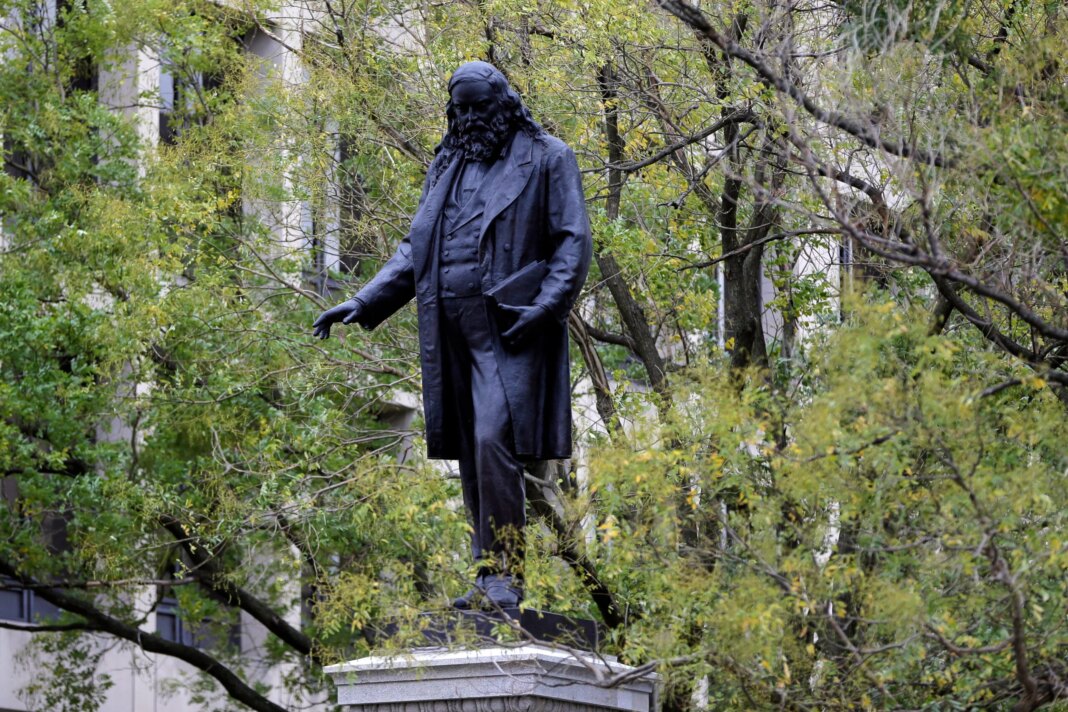The Restoration of Albert Pike’s Statue: A Controversial Move
In a significant turn of events, the Trump administration announced the restoration of a memorial to Confederate General Albert Pike in Washington, D.C. This statue, which had previously been taken down by protestors amid the racial justice protests of 2020, stands as a focal point in the ongoing dialogue about America’s history and its representation in public spaces. The decision to restore this statue has reignited discussions surrounding the legacy of Confederate figures, the symbolism of their monuments, and the broader implications of how history is told in the United States.
Historical Context of the Albert Pike Statue
Albert Pike, born in Massachusetts, served as a general for the Confederate Army during the Civil War. Beyond his military role, he was also a poet, diplomat, and known to have engaged with Native American tribes who adhered to slavery. His statue, erected in 1901, is the only outdoor monument to a Confederate leader in the nation’s capital. Since its placement, the statue has been contentious, symbolizing the conflicting narratives surrounding the legacy of the Confederacy and its figures.
The Events of 2020: A Turning Point
On Juneteenth in 2020, in a powerful act of protest against systemic racism and the glorification of Confederate symbolism, demonstrators removed Pike’s statue from its pedestal and set it ablaze. This date is not merely a holiday marking the end of slavery; it became a poignant symbol of the fight against oppression, representing a broader movement to reevaluate and dismantle relics of racism embedded in public spaces. The removal of the statue was seen by many as a necessary step toward justice and acknowledgment of historical wrongs.
The Decision to Restore the Statue
The restoration of the Pike statue was announced by the National Park Service as part of an initiative following a series of executive orders from President Trump. These orders sought to influence the portrayal of American history across federal sites, reflecting a desire to reshape the narrative presented to the public. The move prompted a review of interpretive materials at national sites, emphasizing a perspective that aligns with a more traditional view of American history, often downplaying the impact of slavery and racial injustice.
Political Ramifications and Public Reaction
The restoration of the Pike statue has turned into a significant political flashpoint. Conservatives have praised the decision, viewing it as a restoration of historical integrity, while critics maintain that it endorses a painful chapter in American history rather than simply commemorating it. Eleanor Holmes Norton, D.C.’s non-voting delegate to Congress, condemned the restoration as morally objectionable, advocating for the removal of such statues from public display and their placement in museums instead—spaces that can provide context rather than honor.
The Broader Movement Against Confederate Symbols
The push to remove statues and monuments celebrating Confederate figures gained momentum following the tragedy in Charleston in 2015, where a white supremacist murdered nine Black church members. Since then, there have been over 480 removals nationwide, highlighting a significant shift in public sentiment towards these symbols. After the murder of George Floyd in 2020, this removal effort intensified, with more than 160 Confederate symbols taken down in that single year.
Pike’s Complex Legacy
Pike’s statue reinforces a complex narrative of American history. Although recognized for his contributions as a poet and philanthropist, the statue notably lacks acknowledgment of his role with the Confederacy, raising questions about the intentions behind its placement and the messages it sends in the heart of the nation’s capital. Erected with the backing of Freemason groups, the statue initially faced backlash from Union veterans, who felt it underscored a troubling romanticization of the Confederate cause.
A Reflection of Historical Conflicts
The Pike statue stands at Judiciary Square, a landscape defined by its association with federal power and justice. The surrounding neighborhoods, named after Union generals, serve as a stark contrast to the statue itself and illustrate the historical tensions between the Union and the Confederacy. The ongoing debates surrounding Pike’s memorial add layers to the already complex web of America’s historical narrative, revealing the enduring discord over how to remember and represent the past.
Conclusion: Ongoing Conversations
While the restoration of the Albert Pike statue has sparked political and social discourse, it also reflects broader societal challenges regarding race, history, and collective memory. The statue’s future remains uncertain as communities and leaders grapple with the implications of its presence and the broader legacy of Confederate monuments in America.



